
Topics
Nearly 38 years after James Meredith struggled against racism to enter the University of Mississippi, students have elected the school’s first black student body president. Nick Lott beat his white opponent by more than 100 votes. [includes rush transcript]
But despite this, the school, which gained notoriety in 1962 when white students rioted against Meredith’s registration, is suffering from strained race relations. Black students became the target this month of racist attacks and threats. A brick containing racial epithets was thrown through a dormitory window. After that, a flier about Black History Month was torn down and replaced with a computer-generated graphic with racist images, racial slurs and the confederate flag.
Today is the last day of Black History Month, and we are devoting part of this program to a remarkable chapter in American history: the freedom struggle in Mississippi.
A movie and a book have just come out: the film, “Freedom Song,” starring Danny Glover, premiered on Sunday on TNT and it is the story of how the civil rights movement reached a small town in Mississippi.
The book is ??Freedom is a Constant Struggle: An Anthology of the Mississippi Civil Rights Movement. It focuses on the critical year of 1964, when civil rights workers were beaten, jailed and murdered, yet freedom schools were established, thousands registered to vote and the Mississippi Freedom Party challenged segregated elections.
The book tells the stories of the participants of the Freedom Summer through songs, articles, photographs and drawings. It has the participation of historical figures of the civil rights movement, as well as its unsung heroes.
Guests:
- Susie Erenrich, founder and Director of the Cultural Center for Social Change and editor of the new book ??Freedom is a Constant Struggle: An Anthology of the Mississippi Civil Rights Movement (Published by Black Belt Press). Call: 202.462.4611. Contact:
- Bob Zellner, first white Field Secretary of the Student Non-Violent Coordinating Committee (SNCC).
- Mamie Till Mobley, mother of Emmett Till, who was murdered in Money, Mississippi, on August 28, 1955.
- Ben Chaney, President of the James Earl Chaney Foundation and the younger brother of James Chaney, one of three civil rights activists killed in Mississippi in 1964.
- Charlie Cobb, worked in voter registration in the South and came up with the concept of the Freedom Schools. He is now a writer/reporter, just finished a book on SNCC activist Bob Moses.
Related link:
??
????
????
????
??
Transcript
AMY GOODMAN: In the current day, we are seeing protests throughout New York State because of the Diallo verdict. Forty-one days of protest, people are planning, for the forty-one shots that rang out on February 4, 1999.
And on this last day of African American History Month, we’re going to look back in time to another time of great tumult and protest. Nearly thirty-eight years after James Meredith struggled against racism to enter the University of Mississippi, students have elected the school’s first black student body president. Nick Lott beat his white opponent by more than a hundred votes.
But despite this, the school, which gained notoriety in 1962 when white students rioted against Meredith’s registration, is suffering from strained race relations. Black students became the target this month of racist attacks and threats. A brick containing racial epithets was thrown threw a dormitory window. After that, a flier about Black History Month was torn down and replaced with a computer-generated graphic with racist images, racial slurs and the Confederate flag.
Today, the last day of Black History Month, we’re devoting the program to the remarkable chapter in American History, the freedom struggle in Mississippi.
A movie and a book have just come out: the film, Freedom Song, stars Danny Glover. It premiered on Sunday night on TNT, and it’s a story of how the civil rights movement reached a small town in McComb, Mississippi.
UNIDENTIFIED 1: All right. They call them the Freedom Riders. When I got to DC, they was just getting on the bus, whites and coloreds. When they get to each stop, they got off together, go in the waiting rooms, together. Brought y’all these newspapers. Says here they already been to Fredericksburg, Richmond, Petersburg, and they still a-comin’. Girl, ain’t nobody ever told you this a dry state?
UNIDENTIFIED 2: Sheriff tells me once a month when I pay him off.
UNIDENTIFIED 3: So where they headed?
UNIDENTIFIED 1: All the way to New Orleans.
UNIDENTIFIED 2: That means they got to come through Jackson, they got to come through Route 51, and then right here through Quitman. The Freedom Riders are gonna integrate our bus stations and, y’all, we’ve got to get organized. And I got a plan. They get arrested, we take their place. We get arrested, other folks take our place. They offer bail, we turn 'em down. It's called, fill up the jails. Now, after a while, they ain’t got no room to arrest nobody else; they got to let us go, and we win.
UNIDENTIFIED 4: Is that your theory, now, is it?
UNIDENTIFIED 2: Well, that’s how SNCC does it.
AMY GOODMAN: That from Freedom Song. And the book, the new book that’s out, Freedom is a Constant Struggle, is an anthology of the Mississippi Civil Rights Movement. It focuses on the critical year of 1964, when civil rights workers were beaten, jailed and murdered, yet freedom schools were established.
Thousands registered to vote, and the Mississippi Freedom Party challenged segregated elections. The book tells the stories of the participants of Freedom Summer through songs, articles, photographs and drawings and has the participation of historical figures of the Civil Rights Movement, as well as its unsung heroes.
Susan Erenrich is the founder and director of the Cultural Center for Social Change and editor of this book, and she herself was deeply involved in the 1960s and is the first person to join us today. We’ll also be joined by Emmett Till’s mother; you could call her the mother of the Civil Rights Movement, as she dealt with her son’s murder in the 1950s in Money, Mississippi.
We’ll be joined by Bob Zellner, who today continues to be an activist in Long Island, New York, and thirty years ago — well, actually in the movie Freedom Song, there is a figure who actually represents him, as he tried coming out of a very racist Klan background to change his family’s history by being a part of SNCC and Freedom Summer.
We’ll be joined by many others, as well, including Ben Chaney, who is the brother of James Earl Chaney, the young man in 1963 who was killed along with Micky Schwerner and Andrew Goodman in Mississippi.
Let’s start with you, Susan Erenrich. Can you tell us about what motivated you to do this book? Where were you in the ’60s?
SUSAN ERENRICH: Well, actually, I’ve never been to Mississippi, and I was seven years old in 1964 during Freedom Summer, except when I was eleven, I started getting involved in anti-poverty programs in Pittsburgh, and I ended up going to Kent State and became very involved there.
For those who were too young to remember Kent State, on May 4, 1970, the Ohio National Guard shot directly into a crowd of students, killing four students and wounding nine others. Because they were white students, the national media was all over that incident. Approximately ten days later on the Jackson State campus, shortly after midnight on the 15th, the Mississippi Highway Patrol and law enforcement officers shot directly on the Jackson State Campus, killing two and wounding up to fifty others.
In 1990, I decided to do a short anthology on the killings at Kent and Jackson State, and I had many participants from Kent State, and I was very disillusioned because I was only able to get four participants from Jackson State at that time. And people had come up to me saying that I should be so proud, because Jackson State was finally remembered, and I was not. I found the imbalance very unsettling.
Approximately a year later, this idea for this project, which is the book, a two-CD set and a theater production, came to me, and I worked diligently to try to track down as many people as I could for this project, that I ended up recruiting approximately ninety people who were involved. And the difference between this book and other books is because I very much believe in people being able to tell their own stories. We remember white history; we don’t really remember black history. I wanted people to be able, in an uncensored, unrevised format, to be able to tell their stories without the fear of having their stories chopped apart or revised in some way. And I created a format for them to be able to do that. So that’s how this project came about.
AMY GOODMAN: You include a lot of people in the project, including Charlie Cobb. “Organizing Field Freedom Schools” was the chapter he did in this. Charlie Cobb was the SNCC field secretary, Student Nonviolent Coordinating Committee, in Mississippi from 1962 to 1967, and joins us now on the telephone. Welcome to Democracy Now!, Charlie.
CHARLIE COBB: Thank you.
AMY GOODMAN: Talk about the strategies that you used. I think these days there’s a lot of organizing going on, and there’s also a lot of reaching out to find the most effective ways to organize. The Freedom Schools were quite remarkable.
CHARLIE COBB: Yeah, what you have to do as an organizer is find whatever openings you can that will move people into action, because in states like Mississippi and indeed throughout the Black Belt South, with the violence and the economic reprisal, what you had was kind of a paralysis amongst black people. You could lose your life or your home or your job, or some friend or family member could be hurt or assaulted. So you had this general paralysis, and it was hard to get people to move, which is partly why — so you had a situation in which there would be some people who might be willing to try and register to vote, but didn’t see that as a critical issue, so you were casting about all the time for other issues that would move people. And education certainly then was another issue that you could get people into motion around.
And all the time as an organizer you had to work, if you were going to be effective, within some framework of community consensus. And I think this is not really understood very well about the Civil Rights Movement, the Southern Civil Rights Movement, this whole tradition of community organizing around community incentive, which is what pushed the SNCC people into voter registration and pushed us into the Freedom Schools and into labor unions, into other forms of organization.
To the extent that there was a strategy — and I don’t hold a view that there was some grand overall strategy, either in the Civil Rights Movement, in general, or SNCC, in particular — the strategy was to find the ways and means in which you could get people into motion to take control over the decisions and decision-making that was affecting their lives. Voter registration was one, as I said. The Freedom Schools were another. And, as I said, to do that, you had to work within the framework of community consensus.
AMY GOODMAN: And how did you get the schools into communities? Were you invited in?
CHARLIE COBB: We were in communities. We were organizing already. We were present in Mississippi. See, there was a huge vacuum in the state in some ways, in the sense of the nation. Mississippi was isolated. It was indeed ignored by the national political structure. A lot of the civil rights organizations that were national felt that Mississippi and the Black Belt of Alabama and the Black Belts of Louisiana and Georgia were too difficult to work in, and they just sucked up money and energy with little result.
But you had all these people in the state who had a long tradition of struggles, and those were the people who welcomed us in, the Amzie Moores, the Aaron Henrys, and so forth. Since we were present already as organizers, the Freedom School was just an extension of our work. I mean, it’s really important for your listeners to understand that we were organizers. We were digging into these communities, not for a few days, but for a few years.
AMY GOODMAN: When we come back, we’re going to hear an excerpt of the movie Freedom Song, where that Freedom School leading to organizing effort for voter registration comes out in the film. And we’re going to also hear from one of the people, another person who was part of that movement, Bob Zellner. You are listening to Pacifica Radio’s Democracy Now! Our guest, Charlie Cobb, who was the SNCC secretary in Mississippi in the 1960s. We’ll be back in a minute.
[break]
AMY GOODMAN: You are listening to Pacifica Radio’s Democracy Now!, the Exception to the Rulers. As we go now to an excerpt of Freedom Song, a new film out on TNT about Mississippi in the 1960s in a small town. Danny Glover stars in it, as well as Vicellous Reon Shannon, who was the young man in the Hurricane movie, who played Lesra Martin, who ultimately, with others, ended up freeing Hurricane Carter. In this movie, he plays a young man whose consciousness is raised in the racist South and becomes a part of SNCC.
This scene that we’re about to play comes out of the Freedom Schools, as people are being organized to ask for voter registration forms, organized to register to vote.
VOTER REGISTRAR: What? Speak up, boy!
SNCC ORGANIZER: They’d like to register to vote.
VOTER REGISTRAR: Niggers don’t vote!
SNCC ORGANIZER: They’d like to take the test.
NARRATOR: All three passed the test. So the next day, five more people went down to try, and four of them passed. Word spread fast. That night, ten more people volunteered to take the test. But word also spread throughout the white community, and this time they were ready.
VOTER REGISTRAR: Now, for the final part of the test, how many bubbles in a bar of soap?
REGISTRANT: I don’t understand.
VOTER REGISTRAR: Anybody know how many bubbles in a bar of soap? Well, you all flunked then. Now, leave us be. We got real work to do.
REGISTRANT: Excuse me? But if you’d be so kind as to tell me how many bubbles there are in a bar of soap, then maybe I won’t appear so ignorant the next time a body asks me.
VOTER REGISTRAR: Get ’em out of here.
UNIDENTIFIED: Alright now, y’all move on along. Go on. Git. Git on out of here.
AMY GOODMAN: A scene from the movie Freedom Song, that just made its world premiere on TNT, on cable, but is being shown all over the country. There was just a showing at Howard University in Washington, D.C., where a thousand people turned out. Charlie Cobb, is that a familiar scene to you, secretary of SNCC in the 1960s and founder of the — one of the founders of the whole concept of the Freedom Schools.
CHARLIE COBB: Yeah, I mean, in those days the county registrars had, well, absolute power to either register you or not register you, and there were laws written to give the registrars these powers, essentially to strip the vote away from black people.
Most often they used a provision that required an interpretation of the Constitution of the State of Mississippi and might give a black registrant a twenty-paragraph-long paragraph to interpret, full of legal jargon.
I suppose today, I mean, it’s hard for people to realize how absolutely hostile those county courthouses were and how much courage it took for local people to walk in there and just say, “I’ve come here to register to vote.” And that’s one of the things that I thought the film captured quite effectively.
AMY GOODMAN: We’re also joined by Bob Zellner, who was the first white Southerner — he was from Alabama — on the staff of the Student Nonviolent Coordinating Committee. He was a field secretary there. Bob Zellner, tell us how you got involved and what your background is, where you came from in Alabama, and your family story.
BOB ZELLNER: Yes, well, I wasn’t the first white Southerner on the staff; I was the first white Southerner to be a field secretary. But I was from Alabama, and I come from a rather conservative background. My father was a member of the Klan, grew up in Birmingham, Alabama. His father, my grandfather, was a member of the Klan. And my mother and father both went to Bob Jones University, which is very much in the news today, still as a bastion of racism. I’m named for Bob Jones, and Bob Jones conducted the wedding ceremony for my mother and father, so that’s the kind of background I came out of in Alabama.
So when I joined the Student Nonviolent Coordinating Committee as the first white field secretary, it was a great blessing and tremendous change for me, but I tried to make it possible for white Southerners to become a part of the movement. And sometimes — I teach the history of the movement now in college, and I have to remind people that the movement was a very integrated movement, although we didn’t have very many white Southerners to come forward. That’s one thing the movie shows, that there was a very small role that we played in those early days, but it began to liberate both white Southerners and black Southerners. So that was important.
AMY GOODMAN: Charlie Cobb, what was your attitude to having whites as field secretary in SNCC and the whole movement?
CHARLIE COBB: This really wasn’t a discussion until much, much later, and it belongs to a body of questions that we were raising as we questioned really the whole system in the United States. If we’re talking about the timeframe of 1961, when the movie is set, or 1960s, when the sit-ins broke out, '62 and ’63, this is not a huge discussion; it's an undercurrent. But I think, particularly with regard to people like Bob, you know, the attitude was, I mean, if they did the work fine, they were welcome.
AMY GOODMAN: In the film, Freedom Song, there is a very powerful scene, where — I think this figure is based on you, Bob Zellner, where a white organizer comes to town, the SNCC organizers are just packing up to leave, because they’re — basically they see that there’s going to be a head-on confrontation coming if they stay. Someone already has been killed, and this is the scene when the character based on you comes to town.
You are listening to Pacifica Radio’s Democracy Now! And we’re going to bring that to you right now.
WHITE ORGANIZER: So I’m going to be traveling to colleges in the South recruiting for SNCC. And I thought the best way to learn what’s going on was to spend a few days here, get to know y’all, see what it is you’re doing.
SNCC ORGANIZER: You come at kind of a bad time.
SNCC ORGANIZER: In fact, we’re closing up.
WHITE ORGANIZER: Uh, fellas?
MR. WALL: Morning. Where you all going?
ALICE: We marching on the city hall.
MR. WALL: It’s too dangerous, Alice. Now’s not the time.
MARCHER: Well, we — we ain’t asking your permission, Mr. Wall. We going.
UNIDENTIFIED: If they go alone, they’ll get their heads busted.
UNIDENTIFIED: I heard a story. One day Gandhi saw all this energy building up for his independence movement, and he said, “Oh, my, there go my people. I am their leader. I must run to catch up with them.”
ALICE: Whose turn is it to stay out of jail?
MARCHER: Mine, thank God.
MARCHER: Yeah, you lucky.
MARCHER: Let’s do it.
MARCHER: Here, we go.
MARCHER: Alright. Alright now. If we going to do this, let’s do this right. Line up double-file. Two lines.
MARCHER: Two lines. Two lines.
MARCHER: Keep a space right up the center.
MARCHER: All right y’all, listen up.
MARCHER: Don’t give the police any reason to arrest you for anything.
MARCHER: Anybody got any knives? Or any sharp objects? You can’t take it on this march. If they arrest you and find any kind of weapons on you, it will become very unpleasant. Thank you. Who’s got a song?
OZZIE: I got one.
MARCHER: Lay it on us, Ozzie.
OZZIE: [singing] Well, I went down to the dime store to get myself some eats. They threw me in the jail [inaudible]. You better leave segregation alone.
AMY GOODMAN: And that from Freedom Song, the new TV movie out on the 1960s and organizing, particularly in Mississippi. Bob Zellner, what happens in this scene is that you and others march into town, and you are beaten by the police there, and they particularly focus on you, on the white man, not liking to see the whole movement coming together, because that’s the greatest threat of all. Can you tell us what happened?
BOB ZELLNER: Well, I don’t know if they particularly focused on me, but everybody was brutalized at that time, but when they started gathering around me it was very typical of SNCC, and it was my introduction to SNCC, really.
AMY GOODMAN: And tell us where this was?
BOB ZELLNER: This was in McComb, Mississippi on October the 4th, 1961, and the scene depicted in the movie is 130 students or so marching out of the Burgland High School, and I joined as the only white person in the demonstration.
AMY GOODMAN: And they were marching because a young woman was expelled from the school?
BOB ZELLNER: Well, both because Brenda Travis had been expelled and also, a few days before, Herbert Lee, who is depicted in the movie as being killed, had been killed by his neighbor, E.H. Hurst, and so they were protesting the murder of Herbert Lee and expulsion of Brenda Travis, who I point out to my young students was fourteen years old at the time.
We just had 500 students from Eastern Long Island come for a viewing of the film, and there was tremendous reception, a lot of compliments from school superintendents, as well, as it will be a wonderful tool in schools.
But at that time, they did — when they gathered around me and began to beat me, Bob Moses and Chuck McDew, as depicted in the film, and Hollis and Curtis and the other young people tried to come to my assistance, on the SNCC theory that we spread the blows around. And actually, one of the people in the mob that’s not in the movie, as such, but was a classmate of mine from Huntington College in Montgomery, Alabama, and he kept shouting, “Zellner, I’ll kill you,” but that’s the kind of atmosphere it was. It was very brutal, and at that time, remember, there wasn’t a lot of attention to what was happening in Mississippi, so Bob Moses and others who pioneered that were extremely courageous, as were the local people, and that’s why this movie is so important.
AMY GOODMAN: Bob Zellner, we also have Mamie Till Mobley on the line with us from Chicago. This is a name in history. mother of Emmett Till, murdered in Mississippi on August 28th, 1955, murdered in Money, Mississippi. And Mamie Till Mobley really sparked a movement in the way she dealt with her son’s death. Mamie Till Mobley, if you can go back to that time — what was it — forty-five years ago, and what happened to your son.
MAMIE TILL MOBLEY: Yes, good morning.
AMY GOODMAN: It’s good to have you with us.
MAMIE TILL MOBLEY: I let my son go to Mississippi with his great uncle, my mother’s sister’s husband, Moses Wright, and he was taking two of his grandsons, and Emmett wanted to go back home with them. And after much schooling and protest, we finally considered, and we allowed Emmett to go.
Now, we don’t really know what happened. We just know that my uncle, being a preacher, was at Wednesday night service, and the boys had gone with him, and they became bored, because church was kind of long and Uncle Mose is a long-winded preacher. So they decided to run uptown and get back before uncle finished preaching. And something happened.
Emmett went in the store to get some bubble gum. His young cousin, Simeon, accompanied him, and as he got back to the door, the kids on the porch, which was a recreation center, wanted to know, “Bo, what did you buy?” We called him Bo and Bobo. He said he wanted to tell them bubble gum, but he began to stutter. And as he was trying to get the words out — I had taught him earlier that if you get into a stutter, whistle and go ahead and say what you want to say. He had had polio when he was five, and that left him with this speech defect. So there was a whistle emitted at the door, with the door open, and he went on to tell them that he had bought the bubble gum. Now, this was evidently misinterpreted by someone on the porch, someone who wasn’t able to go in and buy two-cent worth of bubble gum, and they wanted to share. They wanted to buy bubble gum, and so forth.
So, when Mr. Bryant, the husband of the store clerk, when he returned from some kind of trip he had made to purchase produce to sell, when he returned from Texas, this youngster reportedly went to him and told him, “For fifty cents, I will tell you something you would like to know.” And it ended up being that my son had whistled at his wife. Now, he ignored it. He went to his wife. His wife, she denied it.
But as things went on and the rumor grew and grew and grew, Mr. Bryant decided he had better go to his half-brother Milam and they’d better do a checkout. Well, everybody knows, who knows about Emmett Till, that they invaded the house at 2:30 in the morning. They were armed with shotguns, flashlights and pistols, and they demanded that boy from Chicago. They were able to forcibly take him and put him in the truck. There were other people in the truck, reportedly, his wife, Bryant’s wife, and two black boys on the back of the truck who were there to restrain Emmett if he tried to get away.
We know that they went to a barn in — oh, I don’t know how many miles away, but a considerable distance — at the barn of another half-brother, and there they began to question Emmett, and they began to beat him. The eyewitness said that they beat him with instruments, with guns, and one even picked up an axe and came down across his head, dividing his head into two parts. They also found a gin fan and put it around — wired it around his neck, and tossed him into the Tallahatchie River.
Now, we also know that by this time, before he went into the river, he was very much dead. But three days later, Emmett’s foot came up out of the water. There was a little white boy, young white man, fishing, and he told his dad, “Daddy, there’s a body in the river.” There had been an intense search for Emmett Till, and they knew instinctively that that was Emmett. They called the sheriff. The sheriff sent and got Moses Wright. They had the body brought out of the river, and Uncle Mose identified the body by the ring on his finger. He was wearing his father’s ring.
AMY GOODMAN: Mamie Till Mobley, we have to break for stations to identify themselves, but when we come back we’ll rejoin you, as well as our other guests, as we go back to the 1950s and 1960s on this last day of African American History Month. You’re listening to Pacific Radio’s Democracy Now! We’ll be back in a minute.
[break]
AMY GOODMAN: You are listening to Pacifica Radio’s Democracy Now! I’m Amy Goodman, as we continue with the story of Emmett Till. It is a story that shook this nation — Emmett Till, on August 28, 1955 — or at least some in this nation. We’re talking to Mamie Till Mobley, who still lives in Chicago, as she described what happened to her son on that Sunday in 1955. The confessed killers of Emmett Till were J.W. Milam and Roy Bryant. Milam died of cancer in '83. Roy Bryant, now legally blind, is bitter because, in his words, “Emmett Till ruined my life. He is dead. I don't see why he can’t stay dead.” Well, Mamie Till Mobley made sure he would not remain dead and made his memory live on.
Mamie Till Mobley, when you learned of your son’s death, you took some very dramatic, courageous actions, and that is, bringing his mutilated body to the world’s eye by having photographs taken and keeping the casket open.
MAMIE TILL MOBLEY: Yes. When we knew that Emmett was dead, our first action — we couldn’t take time to cry. As I announced to the family what was happening, of course there were screams. People were hitting the floor, and the hysteria was setting in. I remember standing, announcing that “We don’t have time to cry now, we’ve got to do something. I don’t know what to do, and you’ve got to help me come to make some decisions.”
My aunt spoke up and said, “Call A.A. Rainer.” He was a family mortician. And when we called Rainer, we found out that we could not get the body, because they were in the process of burying the body right then. The sheriff had told Uncle Mose, “Get this body in the ground before sundown.” Well, we knew that if that body was buried, it would never come up again. And we began to put the pressure on, “No, no, no, we don’t want the body to go in the ground down there. We’re waiting here for a funeral.” And through a miracle, really a miracle from God, we were able to get that body shipped to Chicago. I had notified another uncle, and he was there with his truck ready to put ice on the body and drive it to Chicago, because we were told that the railway station would not ship the body, but they did. And my uncle came with the body.
Well, you must remember, in 1955 there were no Dr. Kings, there were no Jesse Jacksons, there were no civil rights leaders that were visible. We only had the NAACP, led by Roy Wilkins, and we had the Brotherhood of Sleeping Car Porters, A. Philip Randolph, and that was all we had. And the NAACP did not fight cases in court, they went through the Supreme Court, and we were not able to get Emmett’s case into the Supreme Court.
But it’s amazing how various people, with what little they knew, we were able to get all of this together, and when we got the people together and we began to protest what had happened in Mississippi, then the ball really started rolling. The chief people behind me were the union leaders of the steel workers union. They were the ones who were providing me with money and all the help they could, and I didn’t even know who it was behind me doing this.
But when I saw Emmett’s body, when it got here, it was all sealed and padlocked, and the papers had been signed that the body was not to be opened, the casket or the box that his body was in. But I was unable to accept that. I couldn’t bury something and didn’t know what it was. After all, it was supposed to my son, and I would be wondering today if I had buried Emmett, if I had not forced that box to be opened.
Well, when it was opened and I saw what was in it, I said, “Oh, my God! What is this?” because it looked like something out of this world to me. The undertaker asked me — I tell him, I said, “I want you to leave this body on display. Anybody who wants to look at it, I want them to see it,” because in my mind I was trying to rationalize or trying to figure out how would I tell people what I had seen. And I said, well, I can’t. Nobody would believe me, and I would begin to doubt myself. So we opened the casket. We put the body on display from Friday until Tuesday.
Fortunately, there was a holiday that came in there, Labor Day, and that meant that we would not be interrupted, we would have all day, all Friday evening, all day Saturday, all day Sunday, all day Monday, and we would bury Emmett Tuesday. And to our surprise and to our satisfaction, people began to — they started a pilgrimage, and it is estimated that 600,000 people passed by his casket. It is also estimated that one out of five had to be assisted when they looked and saw the mutilation that had occurred to that body.
When we did finally make it back into the church to go to the cemetery, we had to be assisted in. I mean, we had to — it was like parting the Red Sea to go through the crowd to get inside the church to accompany the body out. And I remember thinking, as all of this was going on, I said, “Oh my God! Why, why, why, why has this happened?” And later, that was revealed to me, why Emmett had to look the way he did and that it was not just one of those things, that he had died for a very, very important cause.
In fact, the comparison was made between the death of Jesus, who died that we might have life eternal, and Emmett died so that men of all colors could have freedom here on earth, because as long as one person is holding someone else captive, they are indeed captive themselves. They can’t go away and enjoy themselves, because their captive might get away. So this freedom did not just work for the black man; it worked for all men, all colors, all races.
AMY GOODMAN: Mamie Till Mobley on the line with us from Chicago, founder and president of Emmett Till Foundation, dedicated to the memory of her son Emmett Louis Till, brutally murdered August 28th, 1955, in Money, Mississippi. She directs a children’s drama group called the Emmett Till Players.
We’re also joined on the line by Ben Chaney, and his brother, James Chaney, was killed in the summer of 1963 in Mississippi — James Chaney and Micky Schwerner and Andrew Goodman. These are deaths that galvanized a nation, not to say that other young black men had not died. Thousands and thousands had been lynched and died. But it was what Mamie Till Mobley did in Chicago to make her son — to put him in the face of this nation, to say this is what is happening, that really changed the history of this country.
Ben Chaney, you were a little boy when your brother was killed.
BEN CHANEY: Good morning.
AMY GOODMAN: It’s good to have you with us.
BEN CHANEY: OK. Yeah, I turned twelve over the summer of 1964.
AMY GOODMAN: And that summer, your brother was — refresh our memory very quickly. Along with Micky Schwerner and Andrew Goodman, he was part of the movement in Mississippi to push for voter registration. And tell us more.
BEN CHANEY: Well, that summer, earlier that year, Micky Schwerner came to Mississippi, and him and my brother began to organize in southeastern Mississippi in that area, several counties in that area, and in the process they were kidnapped by members of the Klan. They were arrested by a sheriff’s deputy on June 21, 1964, and the deputy released them into the hands of the Ku Klux Klan, and they were murdered, buried in an earthen dam, and their bodies were recovered forty-four days later. No one has stood trial on a state level for murder, and most recently, after thirty-six years, in fact, within the past four weeks, the state attorney general has finally requested the FBI files on that case, and hopefully he will convene a grand jury.
AMY GOODMAN: Ronald Reagan, when he ran for president, launched his campaign in Philadelphia, Mississippi.
BEN CHANEY: Philadelphia, right.
AMY GOODMAN: You know, we would, I guess, have a real sign that times have changed if one of these politicians running for president, if when they go around the country, they paid homage to what happened to your brother and gone to his grave. I understand that his grave continues to be desecrated today.
BEN CHANEY: His grave has been desecrated and vandalized for the past thirty-six years. The most severe desecration occurred in 1992, right after we put up a four foot marble monument. His photograph was shot out of the monument, someone kicked down the monument and tried to scratch his name off the inscriptions. So, yeah, there’s been a lot of serious vandalism, particularly in that area around the grave.
Very little has changed in east-central and southeastern Mississippi. It’s like time has stood still. There’s still large unemployment of African Americans, particularly African American youths. Education is still, like, very low; jobs, very, very bad off, very low. There has been very little change. In fact, the power structure has remained pretty much the same.
AMY GOODMAN: Ben Chaney, you’re in New York, and I’m wondering, as you look back on your brother’s death and deal with what’s happening today in New York, the death of Amadou Diallo and the forty-one days of protest that we’re now in the midst of to mark the forty-one bullets that were shot at Amadou Diallo, what are your thoughts?
BEN CHANEY: That it seems like to me that for at least as long as I’ve been on this earth, and as far back as I have been able to study and to read, that the life of an African American youth, the life of a black youth, is not as valuable as the life of a white youth. And I think it was Fannie — it was Ms. Devine, Annie Devine, who once stated that until white mothers realize that the life of a black son is just as valuable, our struggle will continue.
There’s been very little change, and, in fact, in some ways it’s gotten worse. Now, they can rationalize that the shooting of a young man forty-one times, when in the South in this country in the '60s there was no attempt to rationalize, like the death of Emmett Till. They didn't care who knew that they killed this young man. Nope. They weren’t even concerned about whether or not they would ever be convicted. The death of my brother and Michael Schwerner and Andrew Goodman, it was the Klan leader who said that no jury would convict a white man for murdering a black. So now they feel they have to rationalize these murders, where in the past they didn’t.
AMY GOODMAN: We only have a minute, but today you continue your work, and that’s really the story of all the guests we’ve had on today, is that no one has just gone off and moved on with their individual life, but has been a part, very much, of the Civil Rights Movement right into this year 2000. Ben Chaney, in this last minute, talk about what you’re doing.
BEN CHANEY: We have a James Earl Chaney Foundation, and one of our objectives is to get young people back involved in the struggle. We know that there has been a decline in voter registration, voter participation by young people, and we feel that — I specifically feel that because my brother gave his life so that people can vote, can enjoy full democracy in this country, that we’re shucking our responsibility. These young people need to go to the polls. They need to understand who their politicians are. They need to hold them accountable for what’s happening in this country today, particularly around police brutality.
The James Earl Chaney Foundation, we, each year — last year we put on our first Freedom Ride to Mississippi. We’re going to redo that again this year to celebrate, to commemorate the thirty-sixth anniversary of my brother’s death. But mostly important, what we are doing is focusing on issues that affect young people and really affect us all in this country.
AMY GOODMAN: If people want to get in touch with the James Chaney Foundation, where do they call?
BEN CHANEY: (212) 475-3232. We’ll put them on our mailing list and send them information about our projects.
AMY GOODMAN: Well, I want to thank everyone who’s joined us for the show. It is way too short, and we’re looking forward to doing bigger projects in Woman’s History Month with all the woman involved with the struggle in the '60s, as well as today. Freedom is a Constant Struggle: An Anthology of the Mississippi Civil Rights Movement was the basis of today's program, put out by Black Belt Press, and if you want to get more information, you can go to the web to the website, www.ccsocialchange.org. That’s www.ccsocialchange.org. And the phone number, (202) 462-4611. That’s (202) 462-4611. Again, Mamie Till Mobley and Ben Chaney, thanks for being with us.

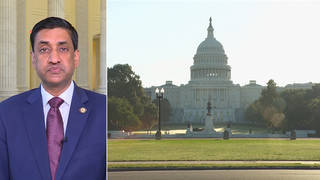
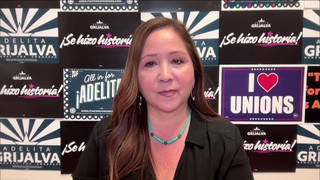
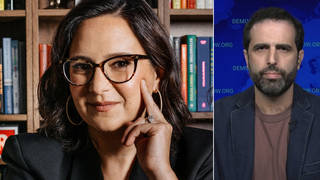
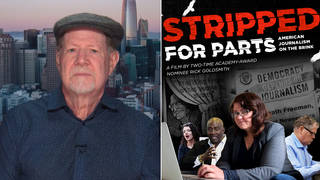



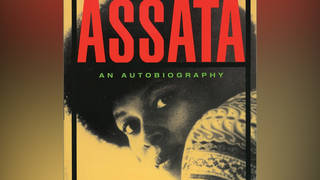

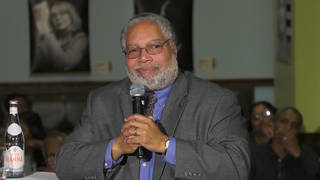
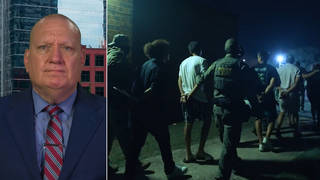
Media Options